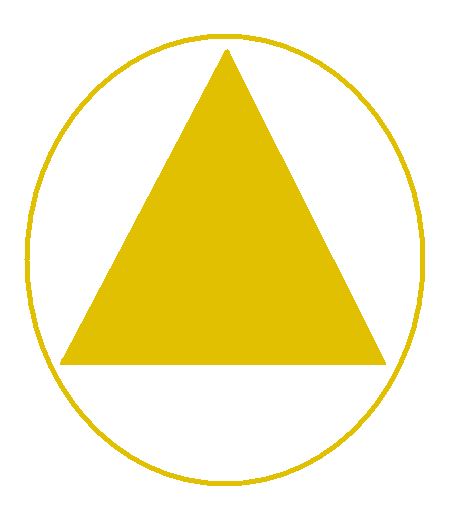Here is the English translation of the Second Noble Truth as it was presented already in our webpage The Four Noble Truths:1
| "There is the Noble Truth of the Cessation of Suffering (duhkha): It is the remainderless fading and ceasing, the giving up, relinquishment, letting go, and rejecting of that craving." |
The original word in The Four Noble Truths that is translated here as "suffering" is duhkha in Sanskrit, and dukkha in Pali. The only differences between the Sanskrit word and the Pali word are the differences in their spellings. They both have the same meaning. But they correspond to a number of terms in English, including: suffering, pain, discontent, unhappiness, sorrow, affliction, anxiety, dissatisfaction, discomfort, anguish, stress, misery, and frustration. Although duhkha/dukkha is often translated as "suffering," its philosophical meaning is more analogous to "disquietude" as in the condition of being disturbed.2
Here is another version of the First Noble Truth, translated by Buddhist scholar Paul Carus of a full version of the First Noble Truth and found in his work The Gospel of Buddha:3
| "Now this, O bhikkhus, is the noble truth concerning the destruction of suffering: Verily, it is the destruction, in which no passion remains, of this very thirst; it is the laying aside of, the being free from, the dwelling no longer upon this thirst. This, then, O bhikkhus, is the noble truth concerning the destruction of suffering." |
The original word in the Four Noble Truths that is translated here as "craving" is trishna in Sanskrit and tanha in Pali. The only differences between the Sanskrit word and the Pali word are the spelling and pronunciation. They both can be translated into as craving, thirst, and desire. But, as we have seen in the previous webpage, The Second Noble Truth: the Cause of Suffering, it should be taken in the present context to mainly mean "craving" and other forms of desire which involve egocentric attachment or aversion.
Recall from the webpage The Second Noble Truth: the Cause of Suffering that there is a certain basic ignorance that is the seed of our egocentricity. The way to true freedom must involve replacing that ignorance and egocentricity with wisdom and compassion. It is also important to remember that true happiness results when suffering is eliminated.
Ringu Tulku, a Tibetan Buddhist Teacher, writes in his book Daring Steps: Traversing the Path of the Buddha:4
|
"Recently somebody asked me, 'How can we change society? How can we teach and help other people?" This shows a very good motivation. It has to be seen, though, that the emphasis is collective: 'How can we change things and be helpful to others?' As opposed to that, the Buddhist approach is to ask, 'What can I do?' The emphasis is on first solving our own problems, and gaining more knowledge and true understanding. These in turn . will generate the capacity to help others to do the same. As long as we experience others as being the cause of our suffering. we will have a very hard time. Whereas, as soon as we are able to put the blame on ourselves by saying, 'This is my problem and my confusion,' there will be a greater amount of clarity. We are capable of turning our own problem into our own experience.
"Working on ourselves in this way, we will eventually reach the cessation of suffering. 'There will be a gradual change in our usual manner of seeing things and reacting to them. We will understand that the strong impulse to always run away from or after something, which is initiated by aversion and attachment, is due to our own confusion. Once we see that our usual reasons are caused by a wrong way of seeing things, we will also understand how unnecessary it is to function in this pattern. When we deeply feel that there is not the slightest need for this struggle, when we have gained a genuine and profound experiential understanding of this, Our confusion will be cleared up. Our misunderstanding will be eliminated, and we will see reality as it is. When this is seen, there will be peace, tranquility, and freedom. "This is the state of an arhat [an enlightened person], which the Buddha described in terms of five qualities. Literally these qualities are called 'elephant,' 'the task is done,' 'the burden is cast off,' 'one's own aim is achieved;' and 'free from pride.' First, an arhat is said to be like an elephant who is not afraid of anything or anybody and does not need any protection when roaming the forests. Such a person is completely independent. Secondly, an arhat is comparable to someone who has achieve a great feat, who has been working hard for a very long time and suddenly finds that all his dreams have have come true. There is a feeling of accomplishment and deep satisfaction. Thirdly, having reached the destination, the end of the journey, one has relieved oneself from the heavy burden that was carried for so long. In this way, fourth, one has accomplished one's own purpose and interest to its full extent. There is nothing more to achieve for oneself. Having done everything that is needed, one is completely free. There is the capacity and a natural and spontaneous willingness to work for the benefit of all other beings. Finally, fifth, the realization that is reached does not entail the notion, 'Now I have done it.' It does not involve any pride. It simply means that things are seen as they really are This is not experienced as being a big deal. It is rather comparable to awakening from sleep. While we are sleeping, we have all kinds at dreams. The moment we wake up, all these dreams are simply no longer there. We will not be particularly proud of having woken up."This is how the Buddha described the attainment of the cessation of suffering. This attainment is brought about through realizing how needless it is to react through aversion and attachment. These impulses are due to confusion, our perverted way of perceiving reality in terms of 'I' and 'other than I.' Once this confusion is seen, we have a clear view. Our mind is cleared. There is nothing to learn. Just by seeing our misconception, we eliminate it and thereby also eliminate our wrong way of saying and doing things. This is the state of an arhat." |
The Four Noble Truths are written in the format of a physician's diagnosis and prescription. The First Noble Truth identifies the ill-ness. The Second identifies the cause of the ill-ness. The Third simply gives the prognosis that there is indeed a way in which this ill-ness can be cured. The Fourth Noble Truth is the prescription. So let us now proceed to The Fourth Noble Truth: the Noble Eightfold Path.

